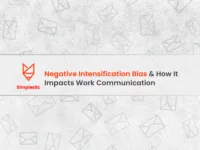Email Introduction Examples & How to Craft Them Effectively | Crafting an effective email introduction is essential for making a positive first impression. A well-structured introduction not only engages the reader but also sets the tone for future communications. Utilizing clear and concise examples can enhance one’s ability to create impactful introductions that resonate with various audiences.
Familiarity with different styles of email introductions can significantly improve networking efforts and professional relationships. Whether reaching out to a new colleague or contacting a potential client, knowing how to frame the message is critical. Insightful examples, such as those that balance professionalism with a touch of personality, can guide individuals in tailoring their approach.
In today’s digital communication landscape, mastering the art of email introductions can open doors to new opportunities. A thoughtful introduction lays the groundwork for collaboration and connection, making it a skill worth honing. Readers will find practical examples and actionable tips on how to effectively introduce themselves via email.
The Importance of a Strong Email Introduction
A strong email introduction is crucial for establishing a successful communication foundation. It helps in creating an immediate connection and sets expectations for future interactions. Two key aspects of an effective email introduction are the impact of first impressions and the tone set for the conversation.
Email Introduction Examples
The first impression formed through an email introduction can significantly influence the recipient’s perception. A well-crafted introduction captures attention and encourages engagement.
Key elements include:
- Personalization: Addressing the recipient by name and referencing shared connections enhance warmth.
- Clear intent: Stating the purpose directly offers clarity, reducing misunderstandings.
- Professionalism: A polished and concise email reflects a professional demeanor, instilling confidence.
Using an engaging subject line also plays a vital role. It serves as the first interaction, prompting the recipient to open and read further.
Aligning with Your Purpose
The purpose of the email dictates how the introduction should be framed. Establishing clarity about the reason for contacting the recipient is vital.
For example:
- When seeking collaboration, one might write, “I believe our teams could synergize effectively on future projects.”
- If pursuing mentorship, an introduction could state, “I’m reaching out to gain insights from your extensive experience in the field.”
It is essential to be concise and direct while ensuring that the purpose aligns with the recipient’s interests. A well-tailored introduction not only captures attention but also encourages a positive response.
Setting the Tone
The introductory email sets the tone for the entire conversation. An effective introduction provides context and prepares the recipient for what to expect.
Important factors to consider:
- Language and style: A friendly and approachable tone fosters openness, while a formal tone may be more suitable for specific business contexts.
- Enthusiasm: Expressing genuine interest in connecting can encourage a favorable response.
Using clarity and purpose in the introduction ensures that the recipient feels valued and motivated to engage further. This can ultimately lead to productive interactions and collaborations.
Personalization Techniques
Personalization sets the tone for a meaningful connection. It shows the recipient that the sender values them as an individual rather than just another contact. Using the recipient’s name is fundamental. For example, starting an email with “Hi Sarah,” feels more engaging than a generic greeting.
Including specific details related to the recipient’s interests or recent achievements can enhance engagement. For instance, “I saw your recent article on market trends and found it insightful.” This demonstrates genuine interest.
Another technique is to reference mutual connections or experiences. Phrases like, “I was introduced to you by John Doe,” can create immediate rapport. Personalization not only captures attention but fosters a sense of familiarity.
The introductory email should clearly state who the sender is and why they are reaching out. For instance, “My name is Emily, and I’m a marketing consultant looking to discuss potential collaboration.”
Using simple language and avoiding jargon keeps the message accessible. Bullet points can help emphasize key information. For example:
- Purpose of the email
- Brief personal introduction
- Call to action
Staying focused on one main idea helps prevent confusion. A clear structure allows the recipient to quickly grasp the email’s intent, making them more likely to respond.
Email Introduction Examples
Subject Lines
The subject line plays a crucial role in email open rates. It serves as the first impression, making it essential to craft one that piques interest. An effective subject line should be concise, ideally under 50 characters. Including the recipient’s name can increase engagement. For example, “John, let’s connect on collaborating” captures attention while being personable.
Using actionable language is another effective strategy. Phrases like “Discover how we can enhance your marketing” can compel the recipient to open the email. Adding an element of urgency can also provoke quicker responses. For instance, “Limited collaboration opportunity available this week” conveys importance. A well-crafted subject line is a powerful tool in improving the likelihood of the email being opened and read.
Testing different subject lines can provide insights into what resonates with the audience. Adjusting language or tone based on feedback can further refine effectiveness. Effective subject lines set the stage for a successful email introduction. Using email segmentation can also enhance personalization. By grouping recipients based on shared interests or characteristics, one can tailor content that resonates more with specific audiences. An email that feels custom-made is more likely to stand out.
Professional Contexts
In professional settings, email introductions should maintain a formal tone. Start with a clear subject line, such as “Introduction – [Your Name].” The greeting should be respectful, using the recipient’s name if known. For instance, “Dear [Recipient’s Name].”
The body of the email should include the sender’s role and why they are reaching out. For example:
- “I am [Your Name], the [Your Position] at [Your Company].”
- “I am contacting you regarding [specific issue or collaboration opportunity].”
Conclude with a courteous closing remark, such as “Looking forward to your response” or “Thank you for your time.” This structured approach fosters professionalism.
Networking Scenarios
Networking emails should be slightly less formal but still polite. Starting with a friendly greeting sets a positive tone. An example subject line could be “Connecting – [Your Name].”
The email should briefly introduce the sender and mention any common connections, such as:
- “Hi [Recipient’s Name], I was referred to you by [Mutual Contact].”
- “I admire your work in [specific field] and would love to connect.”
To make it more engaging, include a question or suggestion for a meeting. Closing with “I would appreciate any advice you could share,” encourages a response and fosters a relationship.
Cold Outreach
Cold outreach requires a direct approach. The subject line should capture attention, like “Exploring Opportunities Together.” Start with a personable greeting and quickly state the purpose of the email.
For instance:
- “Hello [Recipient’s Name], my name is [Your Name]. I noticed your work in [field or project], and I am interested in discussing potential collaboration.”
Follow with a brief statement highlighting mutual benefits or shared interests. Keep it concise and avoid overly detailed explanations. Conclude with a call to action, encouraging the recipient to reply or schedule a call. Ending with, “Looking forward to your thoughts,” maintains an inviting tone.
21 Example Introduction Sentences
- “I came across your recent [post/article/project] on [topic], and I was impressed by your insights.”
- “I noticed your company is making strides in [industry], and I believe we share a common goal of [specific goal].”
- “After researching [Recipient’s Company], I see a great opportunity to collaborate on [specific topic].”
- “I hope this message finds you well—I’m reaching out because I believe [specific product/service] could help you with [specific challenge].”
- “Your expertise in [industry/field] caught my attention, and I’d love to explore how we can work together.”
- “I noticed [Recipient’s Company] is excelling in [area], and I’d like to share an idea that could enhance your efforts.”
- “I’ve been following your work at [company], and I admire your innovative approach to [specific challenge].”
- “I understand [specific industry trend or challenge], and I’d love to discuss a potential solution with you.”
- “Congratulations on [specific achievement], and I believe [specific idea/product] could add even more value.”
- “I saw your recent post about [topic] and thought it aligned perfectly with what we do at [Your Company].”
- “Your commitment to [specific goal or mission] inspired me to reach out and share an opportunity to collaborate.”
- “As someone who’s passionate about [specific topic], I’d love to share how [Your Company] can support your goals.”
- “After learning about your work in [specific area], I believe there’s a synergy between your team and what we offer.”
- “I admire the impact you’re making in [industry], and I’d like to discuss a partnership opportunity that could amplify your success.”
- “Your leadership in [specific niche] makes me confident we can work together to achieve [specific outcome].”
- “I noticed your recent expansion into [specific market/area], and I have a solution that could support this growth.”
- “I saw your interview on [platform], and it resonated with me because of our shared interest in [specific topic].”
- “Your success story in [industry] inspired me to reach out with a unique opportunity for collaboration.”
- “I’m reaching out because I specialize in [specific area], and I see great potential to help you with [specific need].”
- “Given your experience in [field], I’d value the chance to discuss how we can address [specific challenge] together.”
- “Your innovative approach to [specific issue] aligns perfectly with what we’re doing at [Your Company], and I’d love to connect.”
These introductory sentences are designed to spark interest and personalize your cold outreach emails, making them more engaging and relevant.
Email Introduction Examples
Tailoring to Your Audience
Crafting a tailored email introduction requires an understanding of the recipient and a clear alignment with the intended purpose. Recognizing these elements enhances the effectiveness of the communication. Identifying who the recipient is can significantly shape the introduction’s tone and content. Researching their background, role, and interests informs what information to include.
For instance:
- If they hold a managerial position, highlight experiences that showcase leadership.
- If they are in a creative field, mention innovative projects or ideas related to their work.
Using relevant personal touches can also create connections. For example:
- “I noticed your work on the recent project at XYZ Company, which was inspiring.”
- “As an avid reader of your blog, I appreciated your insights on industry trends.”
Such approaches personalize the message and lay a foundation for further discussion.
Email Introduction Examples
Job Application Introduction
Dear [Hiring Manager’s Name],
I am writing to express my enthusiasm for the [Position Name] role at [Company Name]. With a background in [Your Field] and [specific experience/skill], I am confident my expertise aligns with your team’s goals. I have attached my resume and would be delighted to discuss how I can contribute to [Company Objective].
Networking Request
Hi [Recipient’s Name],
I hope this email finds you well. I’ve been following your work in [Field/Industry], and I admire your [specific achievement]. I’d love to connect and learn more about your experience in [specific area]. Would you be open to a quick chat over coffee or a call at your convenience?
Request for Informational Interview
Dear [Recipient’s Name],
My name is [name]. I’m exploring career opportunities in [Industry/Field] and came across your profile. Your experience at [Company Name] stood out to me, and I’d greatly appreciate the chance to hear your insights. Would you be open to a 15-minute conversation in the coming weeks?
Reaching Out to a Former Colleague
Hi [Recipient’s Name],
I hope this message finds you well! I was reminiscing about our time at [Previous Company], especially [specific project/memory]. I’d love to catch up and hear about what you’re up to these days. Let me know if you’re available for a chat.
Follow-up After Networking Event
Hi [Recipient’s Name],
It was a pleasure meeting you at [Event Name]! I enjoyed our conversation about [specific topic] and would love to stay in touch. Let me know if there’s a convenient time to connect further or collaborate on [specific idea].
Business Proposal Introduction
Dear [Recipient’s Name],
I’m reaching out on behalf of [Your Company Name] to discuss a potential collaboration that could benefit [Recipient’s Company]. We specialize in [Your Services/Products], and I believe there’s an opportunity to [specific value]. I’d be happy to schedule a call to explore this further.
Request for Collaboration
Dear [Recipient’s Name],
I admire your work on [specific project/initiative] and believe our expertise at [Your Company/Team] could complement your goals. I’d love to discuss how we can collaborate to [specific outcome]. Are you available for a call next week?
Cold Outreach for Sales
Hi [Recipient’s Name],
I hope this email finds you well. My name is [name], [job title at x] and I noticed [specific challenge or opportunity] in your industry and wanted to share how [Your Product/Service] has helped companies like [examples] achieve [specific results]. Let me know if you’re open to a quick chat to explore this further.
Introduction As a New Team Member
Hi [Team/Recipient’s Name],
I’m excited to join [Company Name] as the new [Position Title]. My background in [Field/Skill] has equipped me to contribute to [specific goal]. I look forward to working with you all and am eager to learn from your expertise.
Common Mistakes to Avoid
Crafting effective email introductions is essential for making a strong first impression. Mistakes in this process can hinder communication and lead to misunderstandings. Attention to detail is crucial.
Overly Generic Greetings
Using generic greetings like “Dear Sir or Madam” can diminish the impact of an email introduction. Personalization is key. Addressing the recipient by name creates a more engaging tone. To enhance relevance, consider including specific details about the recipient. For example, mentioning a mutual connection or a shared interest establishes rapport. This approach shows the sender has done their research.
Avoiding generic greetings helps to convey respect and genuine interest in the recipient. A more personalized approach increases the likelihood of a positive response.
Neglecting the Call to Action
An email introduction should include a clear call to action (CTA) to guide the recipient on what to do next. A missed CTA can lead to confusion or lack of response. Clearly stating the purpose of the email and the next steps is vital. For instance, if a follow-up meeting is desired, clearly state the intent. Phrases like “I would love to schedule a call” or “Let’s connect to discuss further” provide direction.
Without a defined CTA, the recipient may feel unsure about how to engage with the email. This could result in missed opportunities for networking or collaboration.
Forgetting to Proofread
Failing to proofread an email introduction can lead to embarrassing mistakes. Typos or grammatical errors can undermine professionalism and clarity. Before sending an email, take a moment to review the content. Checking for spelling or punctuation errors makes the communication more polished. Reading the email out loud can help catch awkward phrases.
FAQs
This section addresses common queries related to email introductions, focusing on the essential components and techniques for effective communication. The following questions provide clear guidance for crafting professional and personal introductions.
What are key elements to include in a professional email introduction?
A professional email introduction should contain the sender’s name, current position, and a brief mention of the purpose of the email. Including a polite greeting and appropriate subject line sets a positive tone from the outset. Expressing appreciation for the recipient’s time can also enhance the interaction.
What is a concise way to introduce yourself in an email for business purposes?
To introduce oneself concisely, one can start with a greeting, state their name, job title, and the organization they represent. Following this, a single sentence that outlines the reason for the email is sufficient. A clear and direct approach respects the recipient’s time while conveying important information.
How can one effectively connect two parties via an introduction email?
When connecting two parties, the email should begin with a clear subject line indicating it is an introduction. Briefly introduce each person, highlighting their relevant background and connection. Following this, a statement explaining the purpose of the introduction and any next steps should be included to facilitate the interaction.
What constitutes a formal introduction in an email to new colleagues?
A formal introduction typically includes a respectful greeting, the sender’s full name, and their position within the organization. Mentioning the department and any relevant projects enhances the introduction. It’s important to express excitement about working together and invite further communication.
How do you write a personal introduction email to a prospective client?
A personal introduction email to a prospective client should start with a warm greeting. The sender should share their name, position, and a brief mention of why they are reaching out. Personalizing the message by referencing a mutual contact or a shared interest can create a more engaging connection.
Can you provide an example of how to introduce someone else in an email?
To introduce someone else in an email, the sender should start by greeting the recipient and stating the purpose. They can then introduce the individual by name, position, and a brief description of their role or relevant expertise. Concluding with an encouragement for both parties to connect directly can help facilitate the introduction.




